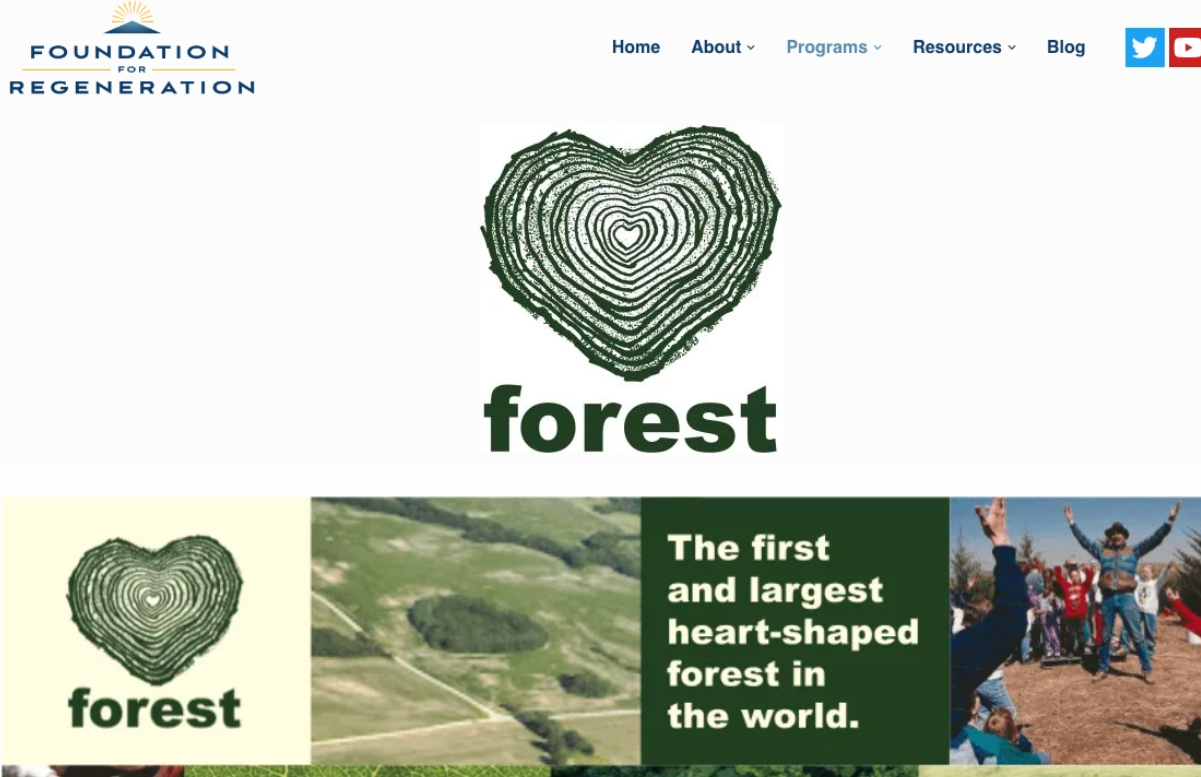Just southwest of Kansas City International Airport stands a heart-shaped forest of 2,500 trees, known as the “KC Heart Forest.”
The inspiration for this forest sprouted from a 1987 peace conference attended by the late Leon Shenandoah, chief of the Iroquois nation. “I am an elderly man and when I travel, I grow weary,” the chief said. “But when I’m here in the heart of America, my heart grows strong, and my spirit soars like an eagle.”
The chief’s words struck a chord with Bob Berkebile, one of the world’s leading sustainable architects. In response, Berkebile led a group of diverse citizens who planted the forest in the early 1990s. The trees include cedar, hardwood, pine, oak, ash, hackberry, and redbud.
For quite some time the forest faded from the public’s awareness. But today it is back on Kansas City’s radar thanks to the Foundation for Regeneration, a Giving Back Fund client founded by Berkebile and Brian Weinberg. The foundation is dedicated to creating meaningful demonstrations of regeneration at the intersection of regenerative land management, circular economy, and financial innovation.
“The forest is still there,” Weinberg said. “They started out as 3-foot trees, and now they’re 50 feet tall.”
The foundation is working on arrangements to lease the forest from the city of Kansas City. Plans include locating lights around the edges, “so you can see it as you’re flying into Kansas City,” Weinberg said.
The forest also will host flagship events and offer online experiences. “It’s a forest created by the community for the community,” Weinberg said. “The goal of the Heart Forest is to inspire generations, current and future, to embody the spirituality and kindness found in the heart of America.”
Another Foundation for Regeneration project aims to stimulate economic development and ecological renewal in Kansas City’s Blue River Valley corridor. During the late 1800s and first half of the 20th century, the Blue River Valley provided recreation and thousands of industrial jobs to area residents. But from mid-century onward, pollution and de-industrialization drained the neighborhood’s vitality and led to widespread decay.
Regenerating this neighborhood is a huge undertaking, but the foundation leaders are forging ahead.
“There’s a lot of opportunity here,” Weinberg said. “We’re focusing on projects that are going to create green collar jobs. We have an opportunity to use some surplus land to sequester carbon. We’re looking at eco credits such as carbon credits, and green bonds. We’ll create regenerative economies through regenerative land management and waste management, turning waste into value. We’re working with a lot of existing companies there.”
Weinberg said The Giving Back Fund plays a crucial role in the foundation’s programs. “Many people waste a lot of time and money trying to set up their own nonprofit. The Giving Back Fund functions as our back office. They handle IRS compliance and bank accounts. They send the checks and donation letters and help with introductions and grant writing. This allows us to focus on impact.”
The Giving Back Fund (GBF) is a national nonprofit organization with global reach that facilitates philanthropic giving by providing consulting, management, and administrative services under a governance structure similar to a community foundation. With more than 500 years of combined world-class expertise, the GBF team of philanthropy professionals has helped its clients create more than 900 individual foundations and fiscally sponsored projects across the globe. GBF clients include athletes, entertainers, business entrepreneurs, corporations, and others — all with a common goal to make this a better world.
To find out more about The Giving Back Fund go to https://givingback.org/








